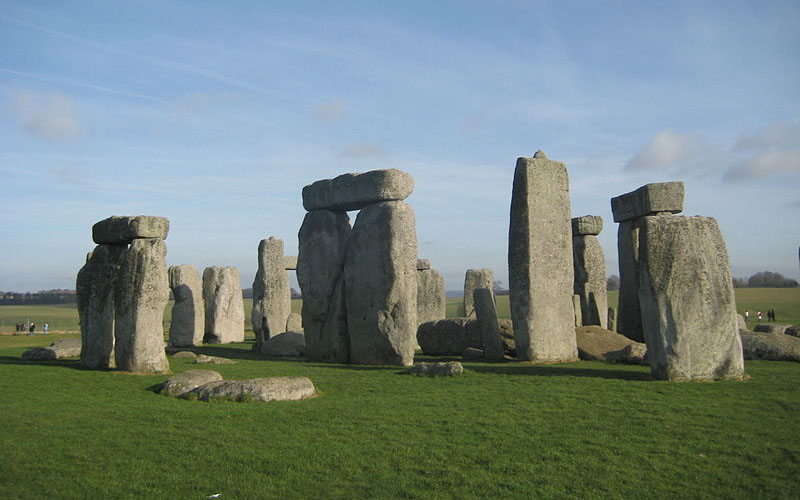
| Salisbury was like another world. Entering Salisbury Plains reminded me of Neuschwanstein on the Bavarian border, a crossover from normalcy into a fairytale setting. I traveled along ancient barrows, imagining what secrets they concealed as I approached the epic circle of stone monoliths. It wasn’t until sunset, however, that the entire vision and meaning of the place changed. The light from the sky made the arrangement |
of Stonehenge so meaningful. It was then that I realized Stonehenge was the predecessor for countless monuments around the world today.
Abu Simbel in Egypt, another noteworthy foundation of the world’s architecture, offers more clues to its meaning. Stonehenge and Abu Simbel’s architecture tracked the cosmos. They effectively mapped the universe according to people’s understanding, establishing symbolism and universal architecture. Light of the solar bodies illuminated this symbolism of the divine and made the place sacred. The solar eclipse, a collision of the sun with darkness, was the foundation for this ancient symbolism, a place where God and man came together. Though their purposes were religious, they established universal architecture that we still see today.
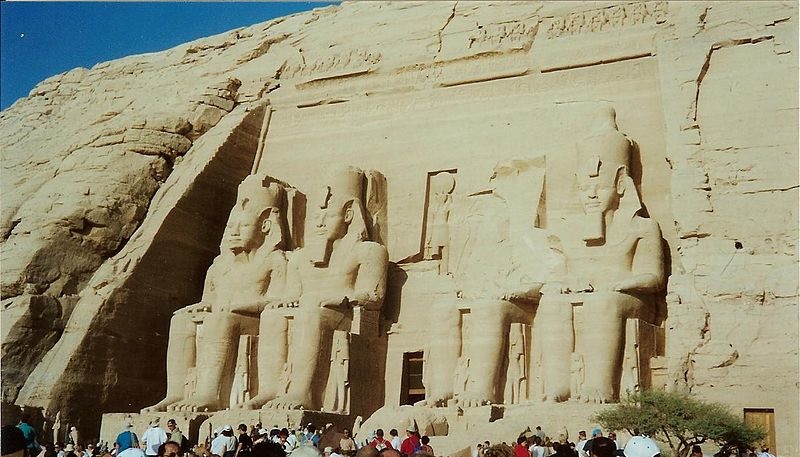
The Visitor’s Journey Of The Sun
The voyage of the sun across the sky was an analogy for the life and death of the pharaoh, providing the basis for the temple of Ramesses II at Abu Simbel. Abu Simbel’s procession begins at the shore of the Nile, where the visitor views a massive frieze depicting the greatness of Pharaoh Ramesses II. Four 67 foot statues of the Pharaoh wearing double crowns of unified Egypt were cut directly from the rock, as well as depictions of Ramesses unifying Egypt and conquering other nations.
|
These statues, and statues of the entire royal family, lay below “a row of baboon statues in adoring attitudes, said to welcome the rising sun.”[1] The rising of the sun was a symbol for Ramesses rising to greatness. “Above the entrance, a figure of the falcon-headed sun-god Ra is shown worshipped by flanking images of Ramesses.”
The god Ra-Harakhte guides the patron through the visit. This is the same god that journeys with the sun each day across the sky. “So that he might rise in the morning, the fiery Ra was compelled to use a boat to avoid being extinguished by the waters.”[2] |
 (archer10 (Dennis)– flickr/creative commons license) |
Thus, the visit to Abu Simbel holds a significance such as this to the visitor. The first floor court contains statues of Ramesses as Osiris, the god of the afterlife, and the second hall depicts Ramesses with his wife on the boat of Amun, which gives them life together after death.
The final and inmost sanctuary contains statues of Ra (god of the sun), Ptah (the state of the sun during the night), Amun (god of the breath of life), and Ramesses.[3] Here, where the sun and nighttime meet, with the breath of life, Ramesses sits with the gods. The visitor went through a process like the journey of the sun, including a journey through the night and the afterlife. The visit to the temple ended with this concept that Pharaoh would live after his death, like the sun rises the next day.
The interaction of sunlight and shadow at the sites are crucial to their meaning. The temple at Abu Simbel is situated so that the rising sun directly hits the depicted baboons. It is “oriented toward the sun, rising tangent on the horizon, at midwinter.” [4] Stonehenge is likewise carefully situated to the sun, so that the station stones align with the equinoxes. In all, there are 13 solar and 11 lunar precise correlations to the arrangement.[5] In addition to Stonehenge and Abu Simbel, there are sites in Britain, Central America, and France that are aligned to the sun and moon at solstice/equinoxes.[6] On two days of the year, at midwinter and midsummer the shadow of the heel stone at Stonehenge hits the center of the circle,[3] which coincidentally, is the symbol of Ra, the guide through Abu Simbel.[7]
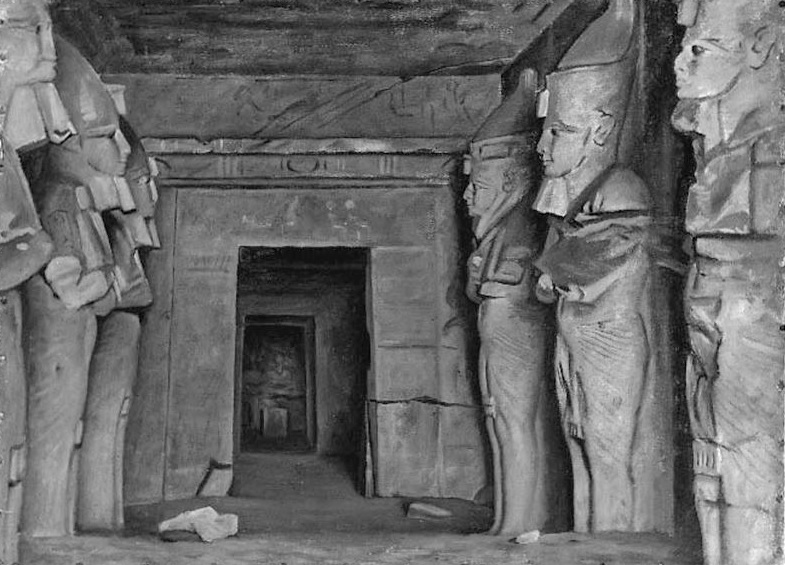
Light And Shadow
This element of shadows and rays of light hitting precise locations annually is also found at Abu Simbel. Abu Simbel is arranged so that the sun shines on the inmost sanctuary’s statues on two days of the year, with Ptah in shadow, because he is the god of the sun at night.[8] The sun shone through the earth to the gods within the sacred stone, a path from the earth to the sun, which was vital to the Pharaoh becoming a god. Aymen Mohamed Ibrahem of the Jordanian Astronomical Society claims this is commemoration of the anniversary of a solar eclipse that occurred in ancient Egypt and contained deep significance to them.[9] Ibrahem claims that the solar eclipse inspired all the solar gods of Egypt.
| Facing Abu Simbel tangent to the sunrise at midwinter commemorated the eclipse, because in Egyptian “’Horizon of Heaven’, means ‘solar eclipse’.” Ibrahem explains the solar eclipse was religiously revered because it contained all four phases of the sun, its “setting, dwelling, transforming, and rising.”[10] If the journey of the sun symbolized Pharaoh’s journey to eternity, the solar eclipse at Abu Simbel certainly symbolized the entirety of this process and was an appropriate basis to the architecture to make the place sacred. |
 (Yakinik– flickr/creative commons license) |
It is thus historically significant that Stonehenge also correlates to solar eclipses. Gerald Hawkins of Harvard University found that the Aubrey Stones at Stonehenge can be used to predict solar eclipses.[4] This function of Stonehenge must have had religious meaning as well. While we cannot tell what the solar functions of Stonehenge symbolized, it is reasonable to assume it was a place of aspiration and determining relationships to the divine. Stonehenge may have meant a similar connection between man and deity as that at Abu Simbel.
The architecture of each site also suggests angelic assistance to the visitors. The Sphinx, the ‘Lord of Solar Eclipses’[9], which was also oriented according to the solar eclipse,[10]) and the massive statues of Ramesses on Abu Simbel’s façade, were symbolic guardians of the sacred locations. Temples in China also contained such guardians. The guardian imperial lion statues are said to “feel the pulse of the earth” under one foot and the sun under the other foot, underscoring the significance of the sun and earth at the temple.[11] The cherubim at Solomon’s temple likewise are of no more significance than guardians of the place.[12] Hebrew scripture explains that the cherubim guard the way to the tree of life, preventing the unworthy from entering. Within the holy place of the temple of Solomon, indeed, are found “trees of life,” seven lamps, which each have seven candle sticks.
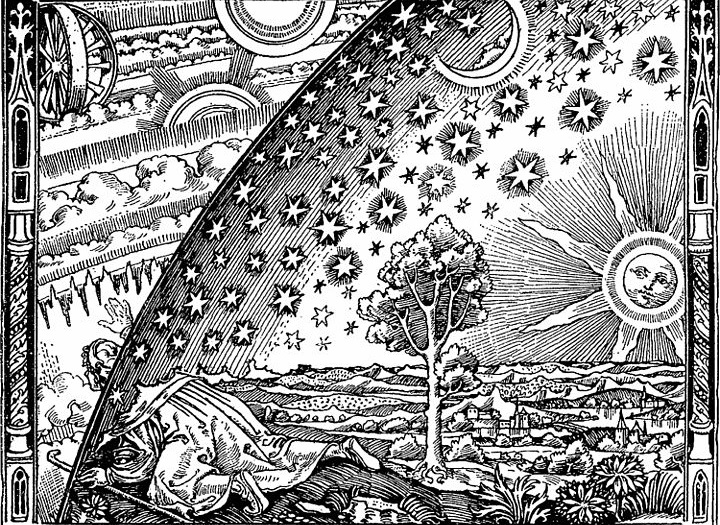
Symbolism And Arrangement
The symbolic “tree of life” could also have significance in other ancient temples. The tree of life from the mystic Jewish Qabalah is a diagram of phases of existence leading to perfection. This diagram matches Abu Simbel’s floor plan when the two are overlaid. Religious scholar Kerry A. Shirts claims there are also similarities between the Qabalah tree of life and Egyptian depictions of balance in the universe, and of marriage.[13] Such correlations suggest that these ancient Egyptian sources helped derive the diagram’s concept as well. More recently, the Free Mason’s have understood the floor plans of the temple of Solomon and Egyptian temples to be phases to the divine. These concepts of phases to divine-hood were likely derived from ancient architecture.
The ancient Celtic and Native American symbols of spirals and circles within each other may have entailed such a meaning. The layout of Stonehenge contains circles within each other, and the center is likely the most significant place since the heel stone’s shadow touches it on a carefully prescribed time. Like Abu Simbel’s procession to the inmost sanctuary, entering each circle may have been a procession through phases to the most sacred place in the middle. From here, it is also worthwhile to note similarities to ancient China’s “altar to heaven.” The T’en T’en consisted of three circular terraces within each other leading to a sacred altar at the center, where the meeting of heaven and earth was worshipped by the emperor.[14]
And also like Stonehenge, a trench of water surrounded T’en T’en.[14] Water also held significance to other sacred places. In the Hebrew religion, the prophet Elijah dug a trench of water around the altar he built for the purpose of calling fire out of the heavens. The trench around Stonehenge connects to the “Avenue” which leads to the nearest river. And Abu Simbel, indeed all of Egypt’s temples, run almost parallel to the sacred river Nile. The Hebrews believed creation occured from the dividing of waters, the firmament above and the oceans below, out of which came land and life. This is similar to Egyptian mythology that creation came out of dark waters of chaos like Egypt annually comes out of the flooded Nile[2] These waters are symbolic of the chaotic universe which the earth is in the center of, receiving divine protection and sustenance. The temple was thus mapped out as a diagram of the universe. This provided the perfect setting for man to try to understand the meaning of life and death, and to determine what would happen after life. Perhaps it was a sort of mechanism with which man could take control of his existence and determine the answers to these questions.
| The solar alignments of Stonehenge and Abu Simbel, as well as their symbolic arrangement as phases in a procession to the divine, were significant as a sort of mini-universe. Both the physical and the spiritual universe were mapped out, scrutinized in such a permanent way so that the visitor could realize his place in it. The voyage of the sun and the planets around the earth held deep significance as symbols of the journey to the divine. Divine guidance and guardianship at these sacred places was necessary to the process, going through certain stages to divine-hood. | 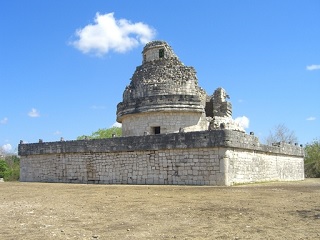 |
Mapping this process chronologically, determining the length of years, solstices, and determining the next eclipse helped them to realize this process. The eclipse was held divine, the rare moment when the sun was explained, when God and man met, and it became the basis of universal architecture.
Sources:
